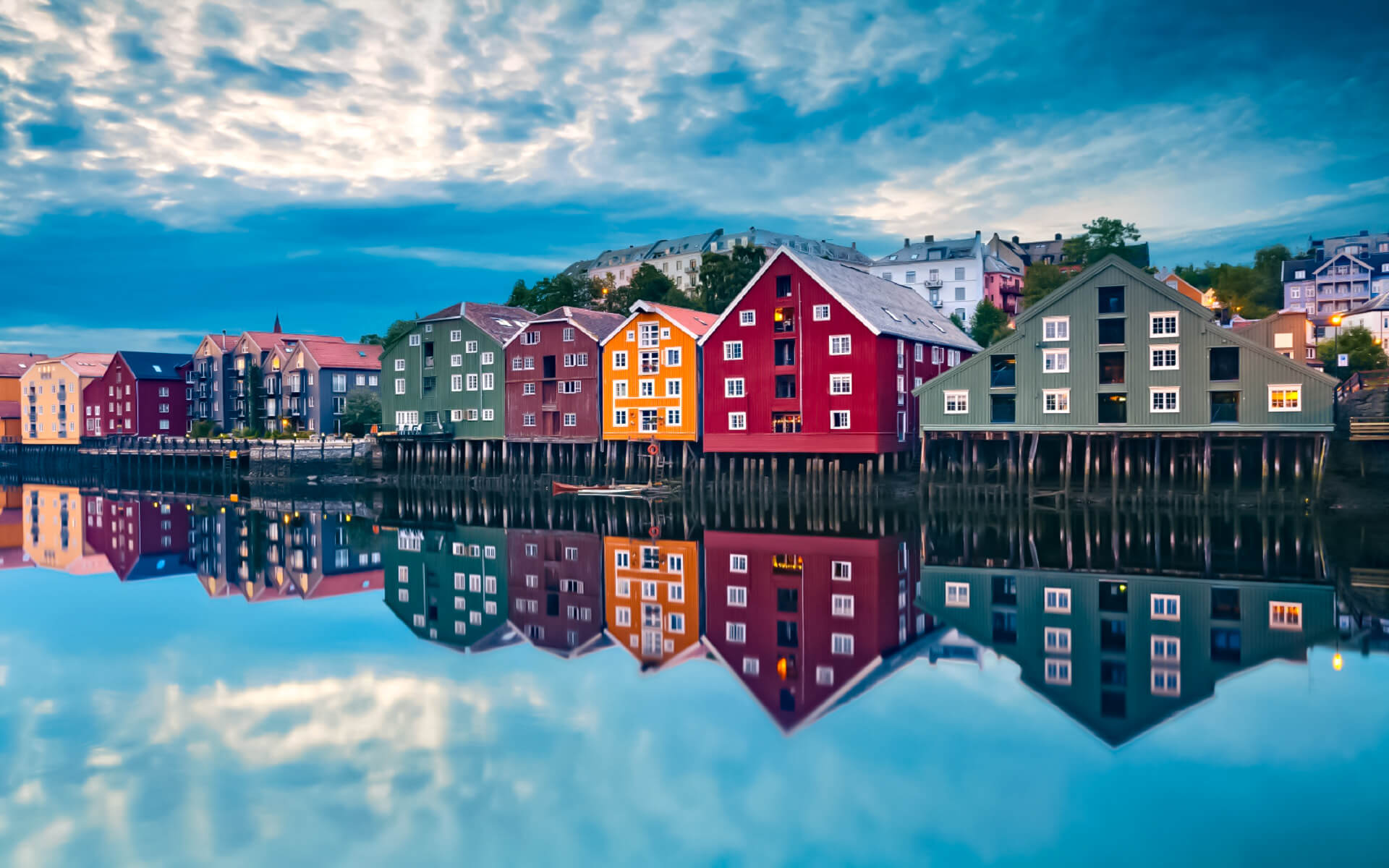Trondheim, often known as Trondhjem or Nidaros, is a historic city in central Norway. It is an important city in Norway, with a beautiful cathedral dominating the skyline and the university dominating city life. Downtown Trondheim is situated inside a big river bend where the river joins the vast Trondheimsfjord.
Trondheim is Norway’s oldest significant city, and its rich legacy can still be seen in and around the city center. It’s a beautiful city on the southern coast of the Trondheimsfjord, Norway’s third longest and widest fjord, which is almost like a little ocean. Trondheim, despite its small size, has a lot going on. Music, arts, culture, alternative politics, nightlife, and student life all combine to make Trondheim one of Northern Europe’s most interesting city centers.
The majority of Trondheim’s city center is filled with modest specialty stores. The main shopping area, however, is concentrated around the pedestrianised streets Nordre gate (English: Northern street), Olav Tryggvasons gate, and Thomas Angells gate, despite the fact that the rest of the city centre is filled with everything from old, well-established businesses to new, hip and trendy shops.
The climate is oceanic, similar to Scotland, and Trondheim is warmed by the Gulf Stream in the winter. As a result, the winters are more warmer than one would anticipate at 63° north, with temperatures reaching +10°C well into October. There is snow in the winter, but the temperature is much more agreeable than in, say, Canada or Finland at the same latitude. However, don’t anticipate Mediterranean temps in the summer. Strong winds are prevalent due to the location’s proximity to the Atlantic Ocean; also, few days are free of rain, therefore it’s a good idea to pack a jacket even in the summer.
Trondheim is located where the Nidelva River meets the Trondheimsfjorden, and it has a great harbor and a protected location. In the Middle Ages, the river was deep enough for most vessels. In the mid-17th century, an avalanche of mud and stones rendered it less navigable and partially destroyed the port. The municipality’s highest point is the Storheia hill, which rises 565 meters (1,854 feet) above sea level. The sun rises at 03:00 and sets at 23:40 on the summer solstice, but remains just below the horizon–there is no darkness (no need for artificial lighting outside) from 23 May to 19 July under cloud-free circumstances. At the winter solstice, the sun rises at 10:01, remains relatively low above the horizon (it is little more than 3 degrees over the horizon at noon), and sets at 14:31.
Since most individuals are connected at home, Internet cafés are sparse. However, there are a few PCs dedicated for tourists at select museums and public buildings, as well as more at the public library (maybe waiting time). Free Wi-Fi is almost certainly available in your hotel room.


